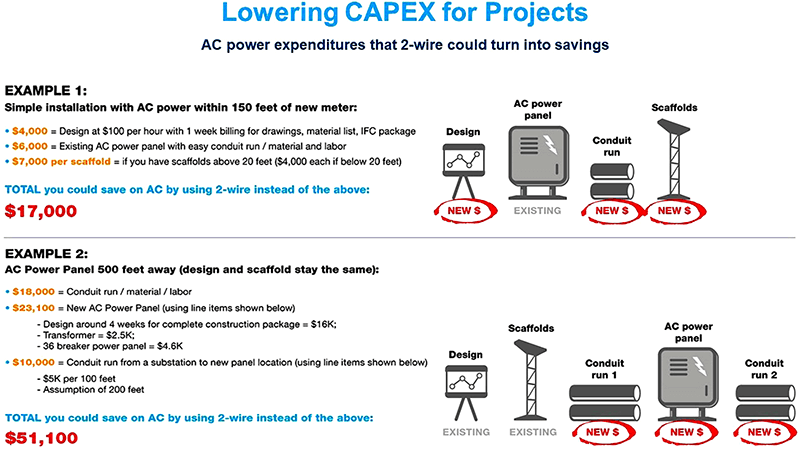The chemical industry is faced with two major challenges: aging facility infrastructure and a workforce with fewer experienced workers thanks to a wave of retirees. These issues have an impact on productivity and a company’s ability to respond to market changes. Competition is fierce, not just for feedstocks, but also for customers. This means facilities need to operate at peak performance for long periods of time, with minimal safety or environmental incidents.
Many new competitors based outside the United States—primarily in China and India—are able to respond more quickly to market demands because they are using newer equipment, have newer process designs and have a more modern infrastructure. In some areas of the world, plants might be directly supported by their governments (where facilities are wholly or partially government-owned), which means they may have more capital to work with. With more capital, they may be more agile in response to global changes.
The problem of aging infrastructure in older plants in the U.S. is particularly tied to the prevalence of legacy two-wire metering equipment. There is also a considerable number of plant employees reaching retirement age who will take with them the skills honed over years of dealing with this existing equipment. The next generation of workers will not have the same level of skills or experiences, and they will expect to work with newer equipment.
Obstacles to Flow Measurement Success
To become more agile and remain competitive in the global marketplace, one of the first and most effective things an operation can do is upgrade older flow meters. Flow meters serve essential functions in chemical plants, from accurately determining the flow of feedstock to measuring the correct amounts of additives in custody transfers. All of these depend on accurate, reliable measurements.
Because many older chemical plants were built with two-wire twisted-pair electrical infrastructure, the chosen equipment was two-wire meters and transmitters. In the past, those were legacy differential pressure meters, turbine meters or positive displacement meters. Until recently, there have been few options to use Coriolis meters, because the power to most Coriolis meters required four wires.
The biggest challenge with the meters used historically is that they have moving parts that wear out, can be affected by the materials used in the plant and require regular calibration. The calibration process means that a meter must be taken out of the line and sent to a lab for adjustment. This is a time-consuming and expensive procedure, and if another meter is not temporarily available to take the spot of the meter out for calibration, it means some processes are briefly stopped. There is also a challenge in that the legacy differential pressure meters are usually sized for maximum flow rates and tend to cause rangeability issues when lower flow rates are experienced.
From a health, safety and environmental perspective, added risk is created every time the processes are stopped and a piece of equipment is removed. This is due to the increased risk of process fluid exposure caused by leaks, spills or improperly removed or reinstalled devices.
Increasingly stringent environmental regulations require a facility to carefully examine procedures, equipment and how best to plan for meeting the needs of the 21st century in a safe and efficient way. Included in this examination should be how to safely and effectively meet the demand for new materials using alternative feedstocks that can be hazardous to personnel and the environment when in process. A Coriolis flow meter with no moving parts reduces the risks of leaks caused by failing components.
 Image 1. Examples of potential cost savings (Image courtesy of Emerson)
Image 1. Examples of potential cost savings (Image courtesy of Emerson)A Successful Setup Across the Plant
Chemical plants in the western European and North American markets need ways to upgrade legacy equipment in order to help their facilities stay competitive against newer facilities.
A first step is planning to upgrade and retrofit aging two-wire devices with more current, stable two-wire devices. In addition, in a two-wire configuration, it becomes a matter of taking out existing meters and slotting the Coriolis into place. Image 1 illustrates the capital expenses associated with two-wire projects.
However, retrofitting and upgrading a facility is just one step toward future success. Another piece of the solution for success is training of new personnel. With modern devices equipped with digital transmitters, there is a need for upskilling the labor force if plants want to fully take advantage of the industrial internet of things (IIoT) and the digital transformation that many industries are embracing, which require different skills than analog devices.
Training the Workforce
With an anticipated shortage of 2.7 million workers in manufacturing over the next 10 years, as highlighted in a 2016 study by the Manufacturing Institute and Deloitte, it has become imperative to offer new hires the tools for their personal success, which then promotes facility success. Worker training can be practical, hands-on classroom training or online training modules provided by the equipment manufacturer.
Also, partnerships between companies in the industry and schools are establishing apprenticeship programs and training the next generation of workers. This model can offer benefits to a facility that participates in an apprenticeship program.
Finally, the last piece in becoming more agile and competitive is adopting and implementing an IIoT strategy in the plant. By ensuring interconnectivity of devices, centralizing data collection and storage, and allowing for remote data collection through wireless devices, the digital transformation allows facilities to make the best possible business decisions.
The main benefit of adopting an IIoT strategy is that process data is more readily available, which makes it possible for data to be used in a real-time, decision-making approach that allows for production optimization and reducing or eliminating unexpected process upsets.


